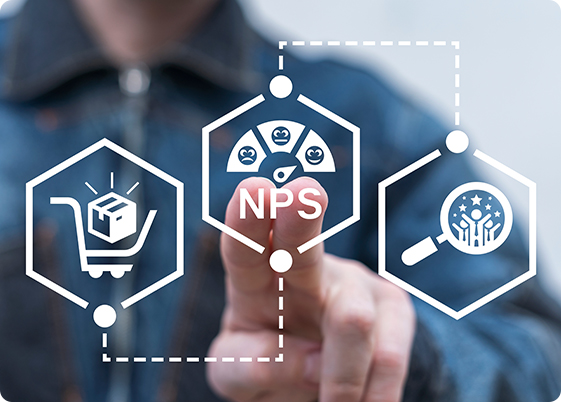
An excellent product or service is the first step in today's competitive and customer-driven economy. What powers long-term loyalty and brand success is customer experience excellence. However, how do organizations determine if they're giving a great experience? The solution lies in its accurate measurement.
This blog discusses how to measure customer experience, what to measure, and the optimal practices companies can leverage to monitor and enhance customer satisfaction along the journey.
What are Customer Experience Metrics?
Customer experience metrics determine how customers experience and engage with a brand. They provide insights into customer satisfaction, engagement, loyalty, and possible pain areas. They enable companies to make fact-based decisions, maximize customer touchpoints, and align service with expectations.
Absent these revelations, businesses can invest in solutions that fail to move the needle or ignore problems that silently erode customer confidence. Knowing metrics to measure customer experience guarantees efforts are focused, quantifiable, and effective.

Top Metrics to Measure Customer Experience
Several metrics are used around the world by CX leaders, but here are the most popular and useful ones:
Customer Satisfaction Score (CSAT)
The Customer Satisfaction Score (CSAT) is a direct customer satisfaction metric with a product, service, or interaction. It's usually measured by asking a single question: "How satisfied were you with your experience?" with answers ranging from very dissatisfied to very satisfied.
CSAT is most useful shortly after customer interactions and is an important measure of short-term customer perception. It assists teams in determining what they're getting right and what they're getting wrong.
If you're learning how to measure customer satisfaction, CSAT is one of the simplest and most effective weapons in your arsenal.

Net Promoter Score (NPS)
Net Promoter Score (NPS) measures customer loyalty by asking how likely customers are to recommend your product or service to others on a 0–10 scale. Responses are classified into:
- Promoters (9–10): Supportive customers who promote your brand
- Passives (7–8): Satisfied but neutral customers
- Detractors (0–6): Dissatisfied customers who can hurt your brand reputation
Scoring is done by subtracting the percentage of detractors from the percentage of promoters.
Wondering how to calculate NPS scores? Here's the formula:
NPS = % Promoters – % Detractors
It is an accepted benchmark for measuring businesses' long-term health and referral potential.
Customer Effort Score (CES)
The Customer Effort Score (CES) tracks how easy it is for customers to do business with your organization, whether resolving a problem or purchasing. The lower the effort, the greater the chances of retaining customers.
Questions like "How easy was it to resolve your issue today?" provide a clear snapshot of operational efficiency and potential friction areas.
CES is essential for measuring customer experience because it is directly related to product convenience and usability, two of the primary drivers of satisfaction.

Customer Lifetime Value (CLV)
Customer Lifetime Value (CLV) is the total worth a customer brings to your business over their entire relationship. It considers purchase frequency, average order value, and customer retention rates.
By increasing CLV, companies improve revenue without investing heavily in customer acquisition.
As part of your customer experience measurement framework, CLV gives a long-term view of how experience influences loyalty and profitability.
Customer Churn Rate (CCR)
Customer Churn Rate (CCR) refers to the percentage of customers who stop using your services during a period. High churn is often a red flag indicating product quality, service delivery, or engagement issues.
Monitoring CCR helps businesses take proactive steps before losing valuable customers.
This is one of the most critical customer experience KPIs directly affecting revenue and market share.
First Response Time (FRT)
First Response Time (FRT) measures how quickly customer service teams respond to a query. Faster responses often correlate with higher satisfaction, especially in support-heavy industries.
Tracking FRT helps evaluate team efficiency and prioritize resources where needed.
It’s vital to customer journey metrics, especially when customers expect real-time support.
Average Resolution Time (ART)
Average Resolution Time (ART) tracks how long it takes to resolve a customer issue. Long resolution times can lead to frustration, even if the outcome is positive.
This metric reflects team performance and internal workflow efficiency, contributing to overall experience quality.

Best Practices for Measuring Customer Experience
Now that you know the key metrics, the next step is understanding how to collect, interpret, and act on them effectively.
1. Use Multiple Touchpoints
Collect data at different touchpoints, such as post-purchase, post-support interaction, and even after cancellation, to get a complete picture of the customer journey. Each moment tells a unique story.
Understanding customer journey metrics requires a holistic approach, not just isolated snapshots.
2. Combine Quantitative and Qualitative Data
While scores and percentages give you measurable insights, don’t overlook open-ended feedback. Customer comments provide context and depth that numbers alone can’t capture.
Use surveys, reviews, and support transcripts to extract themes and sentiments.
3. Segment Your Audience
Analyze metrics based on demographics, product lines, or regions. Different groups may have different experiences, and segmentation helps identify specific pain points or areas of excellence.
This step is essential to implementing a practical customer experience measurement framework.
4. Benchmark Against Industry Standards
Compare your metrics to competitors' or industry averages. This will help you set realistic goals and give context to your performance.
For example, an NPS score of 40 might be excellent in one industry and mediocre in another.
5. Integrate Metrics with Business Strategy
Don’t treat CX metrics as standalone reports. Integrate them into product development, marketing, training, and HR strategies.
Well-measured customer experience KPIs can inform decisions across departments, improving overall customer-centricity.
6. Review and Refine Regularly
Customer expectations evolve, and so should your metrics and methods. Set a regular cadence—monthly, quarterly, or annually—to review performance, update surveys, and refine your approach.
This ongoing improvement process supports long-term success in measuring customer experience effectively.
Customer Experience and Its Impact on Career Growth
The demand for skilled professionals who can analyze, interpret, and act on customer data has never been higher. From CX managers to analytics specialists, organizations seek talent that understands how to measure customer experience and turn insights into strategies.
To join a company that values data-driven decision-making and customer-first thinking, explore customer service jobs at JoinHGS Colombia. These roles offer a pathway to contribute meaningfully to customer success while advancing your career.
Conclusion
In a world where customer loyalty can change with a single bad experience, understanding how to measure customer experience has become a business imperative. From NPS and CSAT to customer effort and churn, the right metrics reveal what customers truly think and feel—and what you can do to improve.
By adopting the best practices outlined above, businesses can build a strong customer experience measurement framework, identify pain points, and create strategies that foster trust, satisfaction, and long-term growth.
Start tracking what truly matters—and turn your data into a roadmap for exceptional service.
Frequently Asked Questions (FAQs)
How do you collect feedback to measure customer experience?
Feedback can be collected through surveys (CSAT, NPS, CES), support interactions, online reviews, focus groups, or social media listening tools. Using multiple methods ensures diverse insights across the customer journey.
How often should customer experience be measured?
The frequency depends on the touchpoint and business model. Key moments (like support resolutions or product delivery) should trigger immediate feedback, while broader satisfaction surveys can be conducted quarterly or biannually.
How do customer experience metrics impact business growth?
These metrics help identify strengths, weaknesses, and areas of opportunity. By optimizing based on this data, companies improve retention, increase revenue, and build stronger brand loyalty.
What metrics help identify pain points in the customer journey?
Metrics like CES, FRT, CCR, and open-ended CSAT responses can pinpoint where customers face friction, delays, or dissatisfaction, allowing businesses to address root causes quickly.
 Colombia
Colombia Canada
Canada India
India Jamaica
Jamaica Philippines
Philippines UK
UK US
US SA
SA
